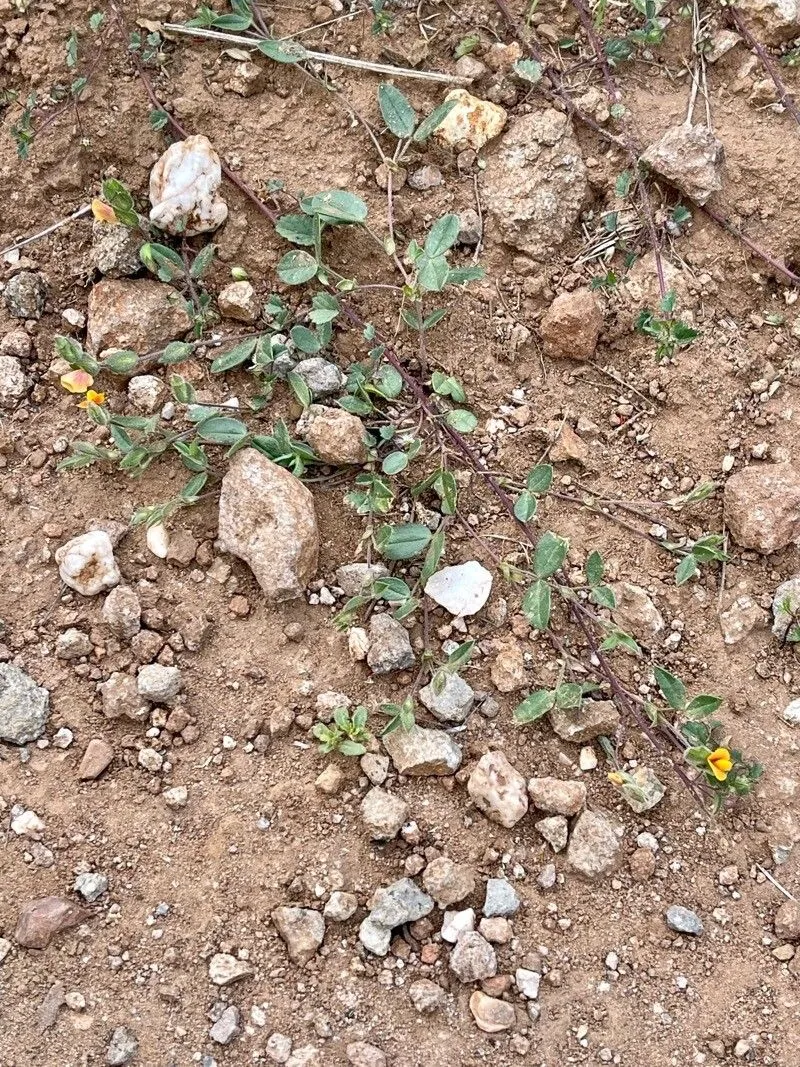
Author: Sm.
Bibliography: A.Rees, Cycl. 39: n.º 2 (1818)
Year: 1818
Status: accepted
Rank: species
Genus: Zornia
Vegetable: False
Observations: Trop. & Subtrop. America
Neto hoja zarzabacoa de dos hojas, scientifically known as Zornia reticulata, is a distinctive member of the Fabaceae family. The plant was first described by the botanist Sm. and is referenced in the Cyclopaedia by A. Rees, published in volume 39, number 2, in the year 1818.
Zornia reticulata is predominantly found in tropical and subtropical regions of the Americas, thriving in the warm and humid climates typical of these zones. The plant’s natural habitat spans a diverse range of locations, where it contributes to the local biodiversity.
The common name “neto hoja zarzabacoa de dos hojas” hints at its unique leaf structure. Zornia reticulata exhibits a pair of reticulate leaves which are a key characteristic that helps in its identification. These leaves are intricately veined, displaying a net-like pattern that is not only visually striking but also indicative of the plant’s adaptation to its environment.
As a member of the Fabaceae family, Zornia reticulata shares many traits with other legumes. These plants are known for their role in nitrogen fixation, which is crucial for soil fertility. By forming symbiotic relationships with bacteria in their root nodules, they convert atmospheric nitrogen into a form that plants can absorb and utilize, enriching the soil and supporting the growth of surrounding vegetation.
In terms of its ecological contributions, Zornia reticulata serves as an important species within its habitat. It provides food and habitat for a variety of insects and other organisms. Being part of the complex web of life in tropical and subtropical America, it plays a role in maintaining the balance and health of its ecosystems.
Despite its ecological importance, detailed studies on Zornia reticulata may still be somewhat limited, emphasizing the need for further botanical research. Understanding its full range of ecological roles, potential medicinal uses, and other practical applications require comprehensive scientific investigation.
In conclusion, Zornia reticulata, or neto hoja zarzabacoa de dos hojas, is a notable plant within the Fabaceae family, recognized for its distinctive leaf structure and ecological significance in tropical and subtropical America. First described in the early 19th century, this plant continues to be an interesting subject for botanists and ecologists alike.
Eng: reticulate viperina, neto hoja zarzabacoa de dos hojas
En: Neto hoja zarzabacoa de dos hojas, Reticulate viperina, Neto hoja zarzabacoa de dos ho, Zarzabacoa de dos hojas
Taken Sep 17, 2017 by Nelson Zamora Villalobos (cc-by-nc)
Taken Nov 15, 2016 by Nelson Zamora Villalobos (cc-by-nc)
Taken May 28, 2014 by OTS – Oviedo-Brenes, Federico (cc-by-nc-sa)
Taken May 28, 2014 by OTS – Oviedo-Brenes, Federico (cc-by-nc-sa)
Taken Dec 3, 2022 by Oliveira Vander (cc-by-sa)
Taken Sep 24, 2022 by Augusto César Muniz (cc-by-sa)
Taken Sep 24, 2022 by Augusto César Muniz (cc-by-sa)
Taken Sep 17, 2022 by Miguel-de-SCAMPS_MX (cc-by-sa)
Taken Apr 9, 2016 by EOL − Wynn Anderson (cc-by-nc-sa)
Taken Sep 17, 2022 by Miguel-de-SCAMPS_MX (cc-by-sa)
Taken May 28, 2014 by OTS – Oviedo-Brenes, Federico (cc-by-nc-sa)
Taken Apr 9, 2016 by EOL − Wynn Anderson (cc-by-nc-sa)
Taken Apr 9, 2016 by EOL − Wynn Anderson (cc-by-nc-sa)
Taken Oct 13, 2018 by espitia columba (cc-by-sa)
Taken Sep 17, 2022 by Miguel-de-SCAMPS_MX (cc-by-sa)
Taken Apr 14, 2013 by EOL − Richard Spellenberg (cc-by-nc-sa)
Taken Mar 22, 2016 by EOL − Wynn Anderson (cc-by-nc-sa)
Taken Mar 22, 2016 by EOL − Wynn Anderson (cc-by-nc-sa)
Taken Apr 9, 2016 by EOL − Wynn Anderson (cc-by-nc-sa)
Taken Sep 17, 2017 by Nelson Zamora Villalobos (cc-by-nc)
Taken Feb 15, 2015 by Nelson Zamora Villalobos (cc-by-nc)
© copyright of the Board of Trustees of the Royal Botanic Gardens, Kew.
© copyright of the Board of Trustees of the Royal Botanic Gardens, Kew.
© copyright of the Board of Trustees of the Royal Botanic Gardens, Kew.
Growth habit>: Forb/herb
Family: Myrtaceae Author: (F.Muell.) K.D.Hill & L.A.S.Johnson Bibliography: Telopea 6: 402 (1995) Year: 1995 Status:…
Family: Rubiaceae Author: Pierre ex A.Froehner Bibliography: Notizbl. Bot. Gart. Berlin-Dahlem 1: 237 (1897) Year:…
Family: Sapindaceae Author: Koidz. Bibliography: J. Coll. Sci. Imp. Univ. Tokyo 32(1): 38 (1911) Year:…
Family: Asteraceae Author: A.Gray Bibliography: Pacif. Railr. Rep.: 107 (1857) Year: 1857 Status: accepted Rank:…
Family: Fabaceae Author: Medik. Bibliography: Vorles. Churpfälz. Phys.-Ökon. Ges. 2: 398 (1787) Year: 1787 Status:…
Family: Aspleniaceae Author: (Cav.) Alston Bibliography: Bull. Misc. Inform. Kew 1932: 309 (1932) Year: 1932…